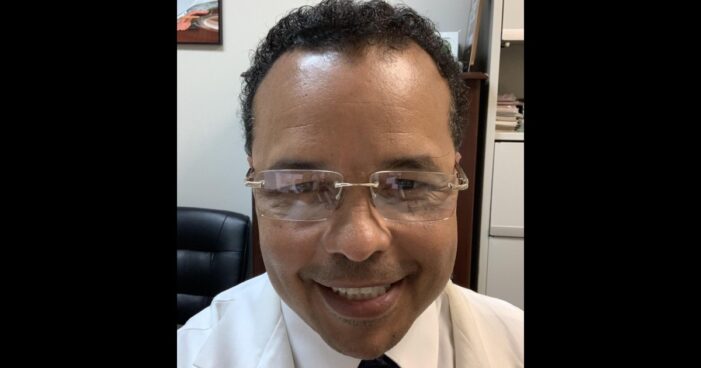NEW YORK, NY: Despite the surge in the variants and increasing deaths across the nation and around the world, people of color still lag when it comes to getting vaccinations against COVID-19.
To make matters worse, Black, Hispanic and Native American people are about four times more likely to be hospitalized and nearly three times more likely to die of COVID-19 than white people. African Americans have nearly the lowest rates of vaccination among any ethnic group. In fact, white Americans are being vaccinated at a rate three times higher than Black Americans. New Centers for Disease Control figures show that of those who have received at least the first dose of a vaccine, 5.4 percent are Black people, compared to 60 percent who are white. According to recent studies, about 35 percent of Black Americans said they don’t plan to get the vaccine, citing fears about safety and concerns that the vaccinations are ineffective.
In September, 75 percent of the adult population in the United States has received at least one dose of a COVID-19 vaccine. While this progress represents a marked achievement in vaccinations that has led to steep declines in COVID-19 cases and deaths, vaccination coverage—and the protections provided by it—remains uneven across the country. With the continued spread of the more transmissible Delta variant, cases, hospitalizations and deaths are rising, largely among unvaccinated people. While as of late July 2021, white adults accounted for the largest share (57 percent), Black and Hispanic people remain less likely than their white counterparts to have received a vaccine, leaving them at increased risk, particularly as the variant spreads.
Dr. Daniel Laroche, Director of Glaucoma Services and President of Advanced Eyecare of New York, has joined the battle against vaccine hesitancy and is doing his part to educate his patients and others about the importance of getting a COVID-19 vaccine.
“There is an urgency to spread the message that COVID vaccines are saving lives. It is critical that people of color get the correct information that these vaccines are making the difference between life and death. Many are getting misinformation and have based their decisions on not getting the vaccinations on untruths or unfounded fears. However, in the medical community we are seeing the heartbreaking results of the decisions as emergency rooms across the nation are filled to capacity and the death counts rise and all of this could be prevented,” says Dr. Laroche.
Reaching high vaccination rates across individuals and communities will be key for achieving broad protection through a vaccine, mitigating the disproportionate impacts of the virus for people of color, and preventing widening racial health disparities going forward. The Centers for Disease Control and Prevention (CDC) say vaccine equity is an important goal and defined equity as preferential access and administration to those who have been most affected by COVID-19. As of September 8, 2021, CDC reported that race/ethnicity was known for 59 percent of people who had received at least one dose of the vaccine. Among this group, nearly two thirds were white (60 percent), 10 percent were Black, 17 percent were Hispanic, 6 percent were Asian, 1 percent were American Indian or Alaska Native, and less than 1 percent were Native Hawaiian or other Pacific Islander, while 5 percent reported multiple or another race. However, CDC data also show that recent vaccinations are reaching larger shares of Hispanic and Black populations compared to overall vaccinations. Among vaccines administered in the past 14 days, 26 percent have gone to Hispanic people and 15 percent to Black people. These recent patterns suggest a narrowing of racial gaps in vaccinations.
In addition to getting vaccinated, Dr. LaRoche stresses the importance of keeping up with regular health care visits, including vision checks, to prevent blindness caused by glaucoma. In most cases of glaucoma, there is no pain, and the loss of vision occurs slowly from peripheral to central. Many people do not even realize it’s happening until they have lost a substantial amount of peripheral vision. But he wants you to know there is a way to prevent the devastating effects of glaucoma: Don’t skip your eyecare visits.
People at risk for glaucoma include the elderly, Black people, people with elevated eye pressure, primary relatives with glaucoma, persons with high myopia, high hyperopia, history of eye trauma and diabetes.
The elevated intraocular pressure from glaucoma damages the optic nerve mechanically and creates decreased blood flow to the eye. The most identifiable cause of glaucoma is the enlarged lens or cataract in the eye. Early cataract surgery and trabecular bypass has become the best option to stop vision loss in patients with glaucoma. The current use of eyedrops and laser help to lower intraocular pressure but do not address the causative mechanism of the glaucoma being the enlarged lens. Incisional cataract surgery and glaucoma surgery is often needed to truly stabilize glaucoma.
All people should be screened regularly for glaucoma as part of a medical eye exam. Screening should consist of an eye examination consisting of gonioscopy (examination of the drainage angle), intraocular pressure measurement with Goldmann applanation tonometry and a dilated optic nerve examination. If there appears to be any damage to the optic nerve or abnormal pressure, then a visual field test should be performed, and optic nerve photos taken. Persons with thin corneas should be more aggressively monitored and treated for glaucoma as the disease tends to be worse in these patients.
If you have eye pressure or glaucoma and feel that you may be losing vision, Dr. Laroche recommends that you seek the care of a glaucoma specialist for a second opinion. DON’T GO BLIND FROM GLAUCOMA! People with conditions such as glaucoma and diabetic retinopathy that could lead to blindness if left unchecked need to stay particularly vigilant with their checkups. The pandemic shouldn’t keep you from visiting your doctor, and everyone should get vaccinated for the Covid 19 virus. He also encourages people to wear face masks on visits and maintain social distancing, even if they are in a health clinic, and if you’re high-risk, consider adding eye protection when in public spaces.
“Eyesight or human vision is one of the most important senses. As much as 80 percent of what we feel comes through our sense of sight. By protecting the eyes, people will reduce the chance of blindness and vision loss while also staying on top of any developing eye diseases, such as glaucoma and cataracts.
About Dr. Daniel Laroche
Dr. Laroche is an exceptional glaucoma specialist in New York. He studied and received his bachelor’s degree from New York University and a medical doctorate with honors in research from Weil Cornell University Medical College. He underwent a medical internship at Montefiore Hospital and finished his ophthalmology residency at Howard University Hospital in Washington D.C., where he was the chief resident in his third year. He later completed his glaucoma fellowship at New York Eye and Ear.

